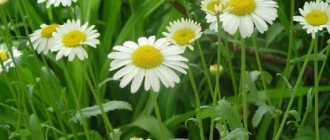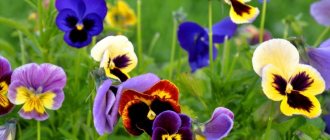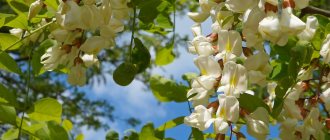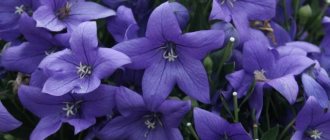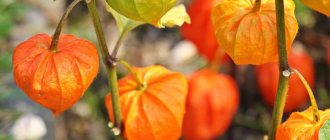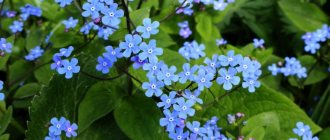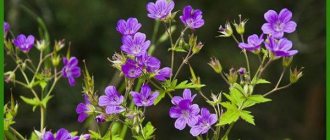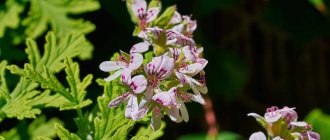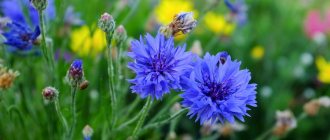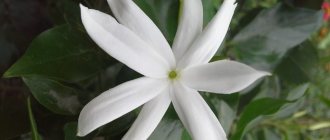Description and preparation
The red slipper has a fragile root system, an erect stem up to 45 cm tall and wide leaves with pointed edges. In May-June (once every two years), the slipper blooms with bright red flowers - at the end of the stem there is one flower with large bracts. The shape of the flower resembles a shoe. The stems and leaves of red slipper are used as medicinal raw materials. Harvesting is done during the flowering period of the plant - May-July: the stems and leaves are carefully cut off, trying not to damage the root system, otherwise the shoe will die.
Dry the slipper grass outdoors under a canopy, avoiding direct sunlight, or in an electric dryer at a temperature of 40C.
During the natural drying process, the raw materials need to be turned over every three days. Harvested raw materials are stored in fabric bags or paper bags for 1 year.
Sometimes the roots of the plant are used for medicinal purposes.
Taxonomy
Synonyms
Slipper grandiflora typical. Group of flowering plants.
According to the Royal Botanic Gardens, Kew:
- Sacodon macranthos (Sw.) Raf., 1838
- Cypripedium calceolus var. rubrum Georgi, 1775
- Cypripedium thunbergii Blume, 1859
- Cypripedium speciosum Rolfe, 1911
- Cypripedium macranthos var. flavum Mandl, 1924
- Cypripedium rebunense Kudo, 1925
- Cypripedium macranthos var. albiflorum Makino, 1926
- Cypripedium macranthos var. speciosum (Rolfe) Koidz., 1926
- Cypripedium speciosum var. albiflorum Makino, 1926
- Cypripedium macranthos var. maximum Nakai, 1940
- Cypripedium macranthos f. rebunense (Kudô) Ohwi, 1953
- Cypripedium thunbergii f. albiflorum (Makino) Okuyama, 1955
- Cypripedium macranthos nothof. alboroseum Aver., 1999
- Cypripedium macranthos nothof. albostriatum Aver., 1999
- Cypripedium macranthos var. atropurpureum Aver., 1999
- Cypripedium macranthos nothof. flavoroseum Aver., 1999
Natural variations
Cypripedium macranthos
var.
rebunense
Rebun, Hokkaido, Japan
Varieties:
- Cyp.
macranthon var.
macranthon
(Typical large-flowered slipper) The flowers are lilac-pink, the tepals and lip have darker veins, paler and mottled towards the base. The staminode is yellowish-white, with pink streaks and specks. - Cyp.
macranthon var.
atropurpureum
Aver. (Slipper large-flowered dark-flowered) Inflorescence 1-flowered. The flowers are dark lilac-purple, the edge of the lip is bordered by a white wavy stripe, the staminode is pink with numerous lilac-purple strokes. - Cyp.
macranthon var.
album
Mandl. (Slipper large-flowered white-flowered)Inflorescence 1-flowered; the flowers are pure white or with barely noticeable lemon or pinkish veins. The median tepal is 4-5 cm long, 2-2.5 cm wide, the lateral tepals are broadly lanceolate, 4-6 cm long, 1.5-2 cm wide. The lip is 4-5 cm long, 3-4 cm wide, equal in length to the tepals or slightly shorter. Staminode is yellowish-white. - Cyp.
macranthon var.
flavum
(Grandiflora yellow-flowered slipper).
Hybrid forms:
- Cyp.
macranthon f.
macranthon
. - Cyp.
macranthon f.
× albo-roseum
Aver. The lip is white. The tepals are pale pink with contrasting pink veins. - Cyp.
macranthon f.
× albostriatum - Cyp.
macranthon f.
× flavo-roseum
Aver. The tepals and lip are white-yellow with pinkish-brown veins, more saturated and mottled towards the base.
According to the Missouri Botanical Garden, the species includes the following variations:
- Cypripedium macranthon f. albiflorum (Makino) Ohwi (1965)
- Cypripedium macranthon var. albiflorum Makino (1906)
- Cypripedium macranthon var. himalaicum (Rolfe ex Hemsl.) Kraenzl. (1897)
- Cypripedium macranthon var. hotei-atsumorianum Sadovsky
- Cypripedium macranthon var. rebunense Miyabe & Kudo (1932)
- Cypripedium macranthon var. speciosum Koidz.
- Cypripedium macranthon var. taiwanianum (Masam.) F. Maek. (1971)
- Cypripedium macranthon var. tibeticum (King ex Rolfe) Kraenzl. (1897)
- Cypripedium macranthon var. ventricosum Rchb.f. (1851)
- Cypripedium macranthon var. villosum Hand.-Mazz. (1936)
According to the Royal Botanic Gardens, Kew, there are no natural varieties.
Composition and properties
Red slipper contains: ascorbic acid, tannin, resinous substances, alkaloids, calcium oxalate and essential oils. Thanks to its composition, red slipper has anti-inflammatory, diuretic and soothing effects. In folk medicine, the red shoe is used for:
- fever;
- malaria;
- decreased appetite;
- gastritis;
- umbilical hernia;
- high blood pressure;
- cardiovascular diseases;
- nervous system disorders;
- headache, migraine;
- sleepwalking;
- depression;
- epilepsy;
- schizophrenia
- insomnia;
- fainting;
- uterine bleeding;
- absence of menstruation;
- swelling.
- 5 pieces. red slipper leaves;
- 1 tbsp. boiling water
Pour boiling water over the leaves and let sit until cool. Strain the infusion. Take 1 dessert spoon.
- 1 red slipper plant;
- 1 tbsp. boiling water
This infusion has a calming effect and also helps with epilepsy and headaches. Take a whole plant - with roots and leaves - and pour boiling water over it. Let it brew for half an hour. Strain. Take 1 teaspoon three times daily before meals.
- 5 g of dry crushed red slipper herb;
- 1 tbsp. boiling water
Fill the shoe with boiling water in a thermos and let it brew for half an hour. Strain. Take 15 ml three times a day after meals. This drug can also be taken as a diuretic or laxative 5-6 times a day in the same dosage. This infusion will also help with uterine bleeding - you need to take it 50 ml at night.
- 1 tsp herbs (stems, leaves) red slipper;
- 1 tbsp. boiling water
Pour boiling water over the shoe and boil in a water bath for half an hour. Strain. Take 1 teaspoon three times a day. The decoction is recommended for decreased appetite, gastritis, lack of menstruation, umbilical hernia, and blood purification.
Contraindications
The red shoe is contraindicated for:
- pregnancy and breastfeeding;
- individual intolerance;
- allergic reactions.
Article on the topic: Cylindrical luffa - useful properties, description
Attention! Red shoe is a poisonous plant! Shoe treatment can only be started after consulting a doctor. Excessive dosage of medicines prepared on the basis of the lady's slipper can lead to depression of the nervous system.
- Meadow lumbago
Meadow lumbago or dream grass is a perennial herbaceous plant with large beautiful flowers of the Ranunculaceae family. Is poisonous. The lumbago is growing by...
Indian tamarind
Indian tamarind or Indian date is an evergreen tree of the Legume family. Grows in Africa, India, Australia, South Asia, Oceania. IN…
Saffron sativa
Saffron or Crocus sativum is a perennial corm plant of the Iris family. It grows in Central Asia, Azerbaijan, the North Caucasus, Crimea.…
Cedar elfin wood
The dwarf cedar or dwarf pine is a creeping, tree-like evergreen coniferous plant of the Pinaceae family. It grows as an undergrowth in coniferous forests, and...
Security
The lady's slipper is listed in the Red Book of the Russian Federation, as well as in the first edition of the Red Book of the Tomsk Region and the Red Books of other regions of Siberia. The flower is listed in Appendix II of the CITES Convention and Appendix I of the Berne Convention. In 1975, in the UK, the lady's slipper received the status of a protected species and was included in the Law on the Conservation of Wild Animals and Plants.
By the end of the 20th century in Great Britain, the orchid population had dropped to one plant in every valley. At this time, a reintroduction program for lady's slipper began, and as of 2003 its population had increased by hundreds of plants.
Important! The species is prohibited for collection and destruction in Russia.
To preserve the population of the species, it is necessary to prohibit deforestation and plant collection. Create and monitor the effective operation of a security system, discourage and impose fines on the illegal collection of flowers in the protected area. Monitor the condition of orchid habitats and organize the designed protected areas.
In the southwestern part of Russia, it is necessary to search for new places where the plant grows in order to impose protective functions on the territory as soon as possible and ensure that the necessary measures are carried out.
Slipper grandiflora, or lady's slipper
The first species of this plant were discovered in northeastern India, China and Vietnam. Afterwards the flower came to Europe, and only then to Russia. You can meet this interesting plant in Siberia and the Far East. The lady's slipper belongs to the orchid family and is a perennial herbaceous plant. The genus of this plant dates back more than 30 thousand years. It is impossible to keep an exact count of the varieties of the flower - this is due to the fact that some species are almost completely destroyed for commercial purposes, while others unexpectedly reappear in the wild. It is not for nothing that the large-flowered slipper plant has such a name - the shape of its flower is very reminiscent of a slipper. In addition, the flowers have a bright, attractive color and a very pleasant aroma.
Legend of the origin of the name
The eternally young goddess of love Venus, aka Aphrodite and Cypris, watched the next bloody battle of the heroes. And despite the fact that she is not supposed to interfere in formidable men’s affairs, she still stood up for the wounded, beautiful Ares, bleeding under the walls of Troy. For this, the stern Athena, the goddess of war, threw Aphrodite to the ground, and she, running away to Olympus again in tears, lost her shoe along the way, which turned into a wondrous flower.
Time passed, meticulous botanists found the flower, described it and named it in Latin Cypripedium calceolus L., which means “little shoe of Cyprida.” And indeed, these beautiful flowers follow the shape of Dutch wooden shoes.
Types of shoe
There are quite a few species of this plant, but three main ones can be distinguished. The true lady's slipper is a plant with a horizontal rhizome, approximately 50 centimeters in height, leaves shaped like an ellipse, and an original flower. It begins to bloom in July. The next species is the grandiflora slipper. It is widely used to create hybrids, as it has several natural variations. Its flowers are very large, a standard one can reach 10 centimeters in diameter. Their color is usually bright pink, but the shoes can also be white or red.
This variety blooms a little earlier than the first type - in May. Another species is the spotted lady's slipper. Its flower is truly beautiful - white or pink, covered with dark purple spots. This is the rarest large-flowered slipper. The Red Book of the Russian Federation has taken under protection this endangered species.
Number
Currently, two small populations of the species remain intact in the valley of the Krasivaya Mecha River in the Efremovsky district. There is one large population in the Zaoksky district. There are more than a hundred individuals of different ages in it, and the presence of generative ones is noted.
The population on the slopes of the Chervenata Stena peak, which has been regularly observed since 1990, has a critically low number of less than 25 plants. They grow at a considerable distance from each other. The percentage of flowering and fruiting individuals is low. In other areas, the population of the species has disappeared or continues to decline sharply.
What conditions are needed to grow slipper?
Since there are actually a lot of varieties of slippers, there are no uniform conditions for growing this flower. The only indispensable thing is that they should be as close as possible to natural growing conditions. Among the cypripediums there are plants adapted to different growing areas - these are orchids that grow on trees, and plants that are more comfortable on stones and rocks, there are also those that prefer simple humus. Therefore, it is very important to know which species is best suited. The soil in which the shoe is planned to be planted must certainly be moderately alkaline, moist and with good air filtration. These flowers love both sunlight and shaded areas.
Related article: False narcissus (yellow) - beneficial properties, description
But there is one more side that unites different subspecies of the slipper - almost all of them are frost-resistant.
The large-flowered slipper does not require special care - the plant is considered not at all whimsical. All that is required is regular, moderate watering. It is important to know that under no circumstances should you flood the soil. Just as you should not overdry it - the plant will certainly die in these cases. If the air is very dry, it is better to spray the shoe periodically or try to create conditions that will allow it to maintain moderate humidity. When the shoe blooms, it is worth feeding it. The best complementary food in this case would be mullein infusion. But you can’t overdo it with mineral fertilizers - they contribute to the formation of salts in the soil, which will also destroy the flower. So, we have partially examined the large-flowered slipper - description, types, care.
What else do you need to know about this plant?
Cultivation in open areas
The flower tolerates frost well. Grows well in clay garden soil or loam. For loosening add:
- Silicon gravel;
- Crushed brick;
- Sand.
It is useful to pour pre-boiled cones into the planting area. Shoes love it when crushed walnut and pine nut shells are added little by little.
Selecting a location
In outdoor conditions, small shrubs are planted in flower beds in the shade or partial shade:
- Honeysuckle;
- Hawthorn;
- Spiraea.
Ideal neighbors for the Lady's slipper are plants with neat, small roots. Good combinations with:
- Goryanka;
- Hosts;
- Cereals;
- Trilliums;
- Astilbes.
Here the conditions for a sliding shadow are created. Sun in the morning and evening, shade in the afternoon. A good option is to plant under deciduous trees - linden, pear, apple trees, in a slightly shaded, windless area. This could be the north side of the house, a fence, or a barrier.
How does the slipper reproduce?
The lady's slipper reproduces in two ways - using seeds and vegetatively. No matter how strange it may sound, seed propagation of a plant is quite difficult. Seeds can sprout only under certain conditions, otherwise they will simply dry out without producing a single seedling. Even if it was possible to germinate a microscopic shoe seed, the first flowers will appear on it no earlier than 8-10 years from the date of sowing. Therefore, such germination is practiced only by biologists who are involved in breeding processes. Gardeners prefer to plant a flower by dividing the rhizome; the optimal time for this is August-October.
Interesting information
Interesting facts about the lady's slipper:
- Seeds can germinate only with the help of symbiont fungi, which penetrate inside the embryo and promote its development.
- Most often it grows in forests where birch and pine trees are present.
- It can take up to 18 years from the moment the seed germinates until the first flower appears.
- The poisonous juice that fills each element of the plant protects it from animals.
- This is a long-lived flower - its lifespan is from 50 to 100 years.
- It was listed in the Red Book of the USSR in 1984.
How to plant a shoe from the root correctly
An orchid (large-flowered slipper) is planted from the root as follows. Part of the rhizome should have several daughter buds. The root is buried in a well-loosened substrate to a depth of no more than 10 centimeters. After this, the substrate is covered with a thin layer of ordinary soil. Important - the layer of substrate above the daughter buds should not be more than 2 centimeters. It cannot be trampled, compacted, or even simply crushed, otherwise the sprouts simply will not break through. So the large-flowered slipper will spend the whole winter, and in the spring it will send out new shoots. And also - during wintering, it is better to insulate the planted flower additionally - this can be dry leaves sprinkled on top or ordinary polystyrene foam (not in pieces, but finely crushed).
Beneficial features
We learned what the grandiflora slipper is. Description of the plant, care and planting were considered. However, there are also interesting facts that you need to know about the shoe. The plant contains many useful substances, so slipper infusions prepared according to ancient recipes are widely used for insomnia, childhood fear, mental illness, epilepsy, headaches, and incontinence. Preparing the infusion is quite easy - add a teaspoon of dry herb to 200 mm of boiling water, let it sit for two hours and pass through a sieve. Drink for headaches, bleeding, hernias, and as a diuretic. But for depression and mental disorders, you can prepare another decoction - 10 grams of dry herb per 250 mm of water. Heat all this in a steam bath for 20 minutes. The cooled broth is best stored in the refrigerator.
For children, prepare your own decoction - pour half a teaspoon of dry herb into one glass of boiling water, leave for at least 8 hours, and filter thoroughly. The child is allowed to drink no more than 1/3 glass, always before meals - about 20 minutes before. If the decoction is taken by a person as a course of treatment, then they drink it as follows. 20 days daily, then they give a break of 10 days. The most remarkable thing about taking a folk remedy is the complete absence of contraindications. A decoction of the large-flowered slipper will only be beneficial, without causing absolutely any harm.
Article on the topic: Syrian strongcarp - useful properties, description
Popular varieties
Appleton
Paphiopedilum Apleton's orchid is a large plant. In the wild, the flower grows in Vietnam, Thailand, Cambodia and Laos, as well as in China. The orchid blooms with large greenish-purple flowers that emit a strong aroma. The flower head reaches 10 cm in size. The green leaf plates have a marble pattern. Flowering begins in spring.
Apricot
Probably the most unusual variety of Paphiopedilum. The petals of the flower heads are yellow and have an orange center. There is also a variety with white flowers. The leaves are covered with spots and reach a length of 15 cm.
Bearded
This variety of Venus slipper is considered one of the most popular. The leaf plates reach up to 20 cm in length and have a marble pattern. Only one flower head is formed on the arrow, mostly colored in red tones. The lip is usually dark red, as are the lateral petals, and the upper sepal is white and streaked with red stripes, of which there are up to 15 pieces. Flowering occurs in the spring months.
The hairiest
An orchid with a heavily pubescent peduncle has such an interesting name. On the first day, when the beauty reveals herself, she looks simply amazing. As if by magic, the petals expanding at the ends, which were smooth, after a few hours become corrugated at the top. Not very wide emerald leaves complete the amazing picture of the flowering of this extraordinary flower.
Adorable or beautiful
It is surprising that the name of this flower, which comes from the Himalayas, fully conveys its visual appeal. The orchid looks truly lovely. Imagine the variegated leaves of a single flower with distinct spots on a peduncle 15–20 cm high. The charmer has a greenish-orange color, the flowers are coquettishly decorated with black dots and dark green veins. The helmet-shaped orange lip shines in the sun and shimmers with emerald veins.
Snow-white
The peduncle, 15–20 cm high, is decorated with a pair of medium-sized flowers of a solemn white color, framed by elongated leaves decorated with a marble pattern. The white color of innocence gives these pretty heads tenderness and charm. A pleasant bonus is the fragrant aroma that the cute snow-white flower spreads. Flowering begins in summer. When grown at home, it requires a lot of heat and light. It needs less fertilizer than its “relatives”.
Slipper grandiflora
It is not for nothing that the large-flowered slipper is called the “Venus slipper”; this name is shrouded in a beautiful legend. Venus, the goddess of beauty, hid from pursuit in a dark forest. While crossing the muddy swamp, she lost her red shoe with satin ribbons. According to legends, the shoe turned into a beautiful, unprecedented flower. Now “northern” orchids grow in forests where it is cool and humid, attracting insects with their unusual variegated blooms.
Historical reference
People often associate the red shoe with shoes.
And that is why there are different legends about the origin of this flower. In Ancient Greece, a story was born about the goddess of love Venus and Adonis. While hunting for animals, the couple was caught in heavy rain, a thunderstorm began suddenly and the young people hid in a cave. They indulged in lovemaking, and things were scattered around. A man was passing by, he saw something bright near the cave and began to examine it. It turned out to be a beautiful shoe, he stretched out his hands to it, but at his first touch it turned into a magnificent flower. Since then it has been called “Venus’s slipper.”
There is another story, it is also connected with the goddess Venus. The girl rarely descended to Earth, preferring the heavenly palaces, but one day she went for a walk in the forest. Her appearance became a whole performance - all the animals gathered to admire her beauty. The birds sang their wonderful songs to her, and the breeze caressed her hair. Every corner of nature greeted the most beautiful woman in the world, praising her virtues. She devoted many hours to meeting the elements and animals, got tired and decided to rest. She lay down in the shade of a huge tree and, to make it more comfortable, took off her shoes. Then she forgot about them, and they turned into beautiful flowers that spread throughout the world.
Today, red slippers are not often found, because of their beauty they have suffered. People picked them to decorate their homes, but the cut flower does not live for more than a week.
Description of the plant
The Orchid family contains a beautiful perennial herbaceous plant with a variegated slipper flower. This is the lady's slipper or lady's slipper. In Russia, the plant was given other names: “Virgin’s boots”, “Cuckoo’s slipper”. The British call the flower “ladies' shoes,” the Americans “moccasins.” Despite its colorful flowering appearance, the plant also has beneficial properties, which is why it is widely used in medicine.
Grandiflora slipper flower
The lady's slipper is common in the Far East, in the eastern regions of Russia, Kazakhstan, and Mongolia. From the main rhizome (short and thick) a stem grows up to 45 cm in height. The plant has basal, sessile (usually four of them) and oval leaves, slightly pointed towards the end and slightly pubescent with white hairs.
In the wild, there are many colors of lady's slipper flowers: from pink, violet-pink to purple and cherry with speckled perianth. The shoe or lip is highly swollen, mottled, most often covered with spots and dots (pictured). Flowering begins in mid-summer (July). After flowering, an untwisted ovary with a fruit-box is formed.
Note that the roots of the large-flowered slipper grow quite slowly - up to 4 millimeters throughout the year. The bud from which the flower is formed is formed long before the flowering process itself, namely 3-5 years.
Today lady's slipper is a cultivated plant, represented by many varieties. The first such “northern” orchid was grown in the St. Petersburg Imperial Botanical Garden.
Paphiopedilum in its natural environment
In nature, the Lady's slipper orchid prefers moderate lighting and neutral soils with sufficient moisture . It is found in mountainous areas, on plains, forest meadows and forest edges.
In one place, the Lady's slipper orchid can grow for about 100 years without transplantation , this is a record among flowers.
The collection of orchids is prohibited throughout Russia; the wild plant is listed in the Red Book, and it is also protected in all European countries.
The type of flower crop "Venus's slipper" has perfectly adapted to winters with little snow and temperature fluctuations down to minus 30 degrees. Great damage to orchids in nature is caused by deforestation - natural habitats.
Amateur and professional flower growers have long appreciated paphiopedilum. Many types of orchids thrive in apartments, greenhouses, and winter gardens . Proper competent care of the plant is one of the conditions under which it will delight its owners with flowering for many years.
Loading...Add comment Cancel reply
Your email address will not be published. Required fields are marked *
A comment
Name *
Email *
Website
Save my name, email, and website in this browser for the next time I comment.
This site uses Akismet to reduce spam. Find out how your comment data is processed.
Precious ludisia orchid with beautiful leaves and modest flowers
Flower growers value orchids for their exotic, bright and unusual flowers. But there is an exception in the world of these beautiful plants - the Ludisia orchid,...
1479
Succinic acid for orchids: 2 methods of use
Extracted from amber, some living organisms and brown coal, succinic acid benefits not only humans, but also plants. Many...
3015
Vanda Orchid: 5 popular species with photos
The Vanda orchid is one of the most luxurious species of the Orchid family. For a long time it was believed that she had a very capricious character...
3655
Join us on Facebook
RoomFlower Indoor flowers
Popular plants
- Chlorophytum
- Scindapsus
- Dendrobium
- Vallota
- Rose
- Adromiscus
- Spurge
- Abutilone
- Aspidistra
- Lady's slipper
We are on OdnoklassnikiRecent comments
- Galina to the post: Areca Chrysalidocarpus: 2 species for indoor breeding “They gave me such an exotic race..”
- Meruert to the post: Spathiphyllum: types of female happiness on your windowsill “I am very surprised that there are varieties and different..”
- Anya to the post: Ever-blooming begonia is the most popular flower for home and garden “I have several types of begonia..”
- Valya to the post: Cissus: grape ivy and 11 species with photos “Ivy is a famous air purifier..”
- Alexandra to the post: Growing greens on the windowsill - a simple and useful hobby “Today we celebrate the increase in those..”
